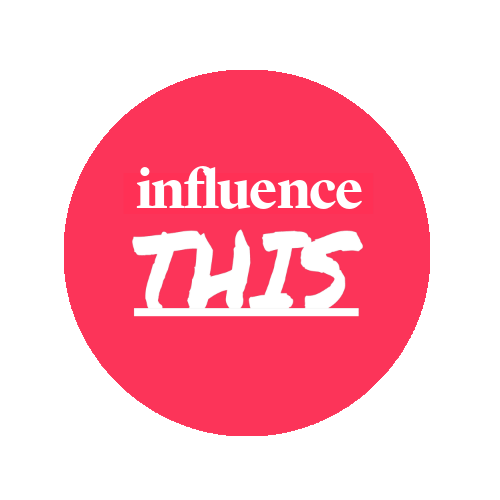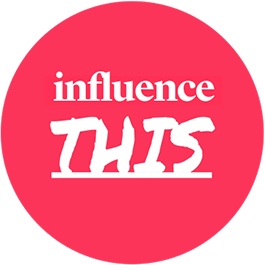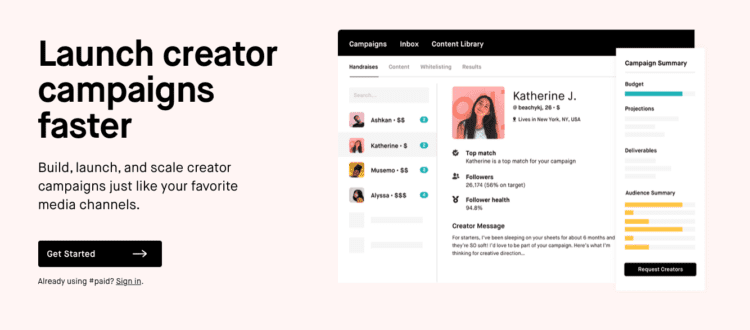The Future of Influencer Marketing with #paid

Leading brands are increasingly working with social media creators to engage with their audiences and drive sales. Beyond vanity metrics such as comments and likes, partnerships with creators can significantly boost your ROAS (Return on Advertising Spend).
A recent study reported that 89% of marketers say the ROAS from influencer marketing is just as effective –if not better–than other marketing methods. 71% of the marketers who responded said they get higher-quality traffic and consumers through influencer marketing, as well.
Influencer marketing is a rapidly-growing industry, but it’s also evolving quickly. Innovators such as Bryan Gold, co-founder and CEO of #paid, are shaping the future of influencer marketing through strategies and best practices that are producing results. Two such practices are Creator Media and Whitelisting–in which creators are leveraged as a media channel.
How #paid Was Born
While studying at the University of Western Ontario, Bryan’s friend, Ronnie, started an Instagram account to document her fitness journey. Ronnie crushed her fitness goals and gained 100,000 followers in six months.
“People wanted to know what protein powder or blender she used, and she would tag the products,” Bryan says.
He and co-founder Adam Rivietz were inspired to create a seamless solution to help brands connect with influential content creators. They currently work with top brands such as Coca-Cola, Uber Eats, Starbucks, Toyota, Adidas, Audi, Spotify, and H&M and offer a SAAS (software-as-a-service) or managed campaign service.
“We set out to create the easiest way to connect brands and marketers with content creators like Ronnie, who just want to create content and share it with their engaged audiences,” he says.
#paid now has 20,000 creators in its network. Their current network works through Facebook, Instagram, YouTube, Twitter, Snapchat, and Pinterest. Bryan says they’re also interested in expanding into emerging platforms such as TikTok.
Rather than purchasing new media to enhance a user’s experience on a social media marketing platform like Facebook, Bryan says the future of influencer marketing is in leveraging creators as media channels.
The conventional method of finding creators has been for brands to first choose who they want to market to, then try to identify the creators who would be best suited for that market.
“When a brand launches a program through #paid, we’ll scan our 20,000 creators and find the top 200 that over-index in the brand’s target audience,” Bryan says. “Out of those 200, we’ll send an opt-in request to see if they’re interested.
“From there, that list gets curated down to people who reply that they’re interested. We select the top 20, then show them to the brand.”
The way creators work with brands will largely depend on the type of content that makes up the campaign, as well as the platforms the creator will be using. Workflows and approval processes will vary from one platform to another, as well.
To connect with creators who will have a positive impact on your brand, Bryan says, it’s important to do your due diligence. Brands won’t benefit from partnerships with “influencer” accounts that have been artificially bolstered with fake follower counts.
Whitelisting Creators for Campaigns
paid offers brands the option of whitelisting, or running paid social posts through a creator’s handle. Brands and marketers can direct paid dollars to existing posts from their creator partners to quickly and easily run a sponsored ad.
Bryan says whitelisting is a significant part of influencer marketing’s future–and that it works three times better than standard sponsored posts.
Best Practices for Creator Media
The term “creator media” captures the distinction between influencer and creator and refers to high-quality content produced by passionate creators that resonates with their audience.
“The distinction between creators and influencers is really important,” Bryan says. “Creators care about their craft and have real followers. It’s not going to be valuable to work with someone who’s just reposting content to a fake audience.”
To remedy this issue, Bryan and his team developed an audience health score that helps them determine whether an influencer account is real.
“You get the top creators who over-index in your target audience with a specific message about why they’re a good fit,” he says. “And that’s how you create authenticity at scale.
According to Bryan, brands looking to partner with creators for marketing campaigns should vet creators based on three major criteria. These are:
- High-quality content. Look for creators who share high-quality content and cultivate a unique brand voice in their niche. Bryan says creators who grow quickly are the ones who resonate with their audience–particularly because they stand out from the crowd.
- Authenticity. “Consumers are more astute now than ever,” Bryan says. “First and foremost, you need an authentic partnership. If someone hasn’t actually tried your product, don’t have them post about it because people will see through that.”
- Honesty. Disclosing paid posting is one of the most important things creators can do, Bryan says. Creators who use hashtags like #ad or #sponsored can help position your influencer marketing campaigns for transparency.
Keep these best practices top-of-mind as you move forward with your marketing campaigns in 2020. They will set your brand up to have a positive impact on consumers–and, in turn, will greatly benefit your brand.
If you want more information, you can download Bryan’s from the Commerce and Conversions of influenceTHIS here.
About MNP – As a leading national accounting, tax and business consulting firm in Canada, we support tech, media & telecom companies through all stages of their life cycles. How? With a vast network within the space, combined with extensive service offerings tailored to your needs. We can secure grants or government incentives, assist with public transactions or going across the border, and structure your business through corporate finance and tax planning for growth or exit strategies.
Written by Haley Walden



